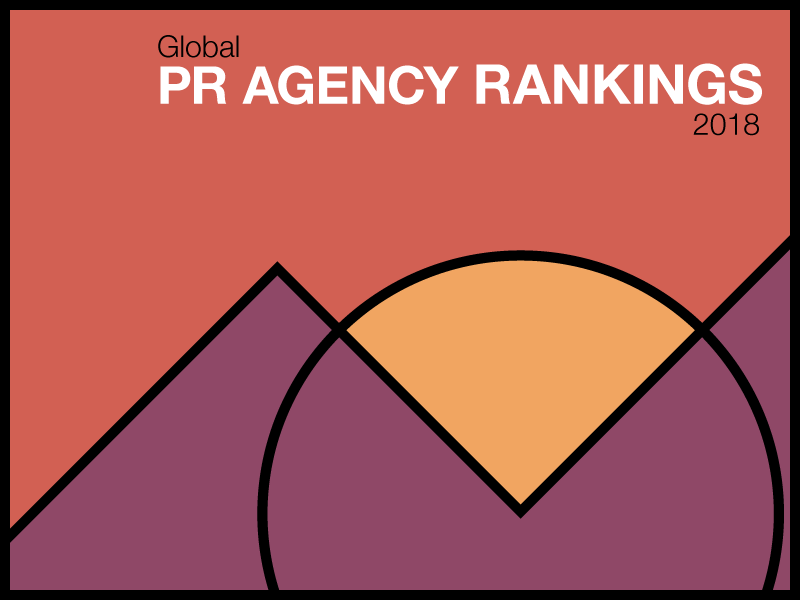Arun Sudhaman 27 Apr 2018 // 1:18PM GMT

The numbers are in, and they appear to prove what the Holmes Report has been suggesting for quite some time now: midsize PR firms are leading the market when it comes to growth and innovation.
Our definitive Global 250 ranking has long hinted at this trend, but this year’s edition brings the argument home with conclusive clarity. For the record, the world's Top 10 PR firms reported fee income of $5bn, up just 0.9% compared to 2016, effectively making it the worst year for major PR networks since the global financial crisis of 2009. Of the Top 10, only Cohn & Wolfe and BlueFocus registered double-digit growth, with several others declining.
However, midsize PR firms — defined for these purposes as those within $50m to $250m — performed handsomely in picking up the slack, illustrating how this tier of agencies have come to lead the market in terms of both growth (albeit from a smaller base) and innovation. Midsize firms were up 6.1% in reported (USD) terms, or 3.1% on a constant currency basis.
Within this group, several agencies recorded eye-catching growth of more than 15%, including W2O Group (+18%), Japan's Vector (+38%), Carmichael Lynch Relate (+18.8%), Allison+Partners (+15%), Marina Maher Communications (+20%), GCI Health (+24%), H&H (+25%), SKD Knickerbocker (+19%), Prosek Partners (+32%) and M Booth (+18%).
Neither is this a one-off trend. That cadre of agencies has been outperforming the market for several years now, leading Paul Holmes to note: "In an environment of fast-paced change, it seems that while scale is helpful — at least on a national market level — the ability to adapt is also important. That is a benefit to firms in the middle market: large enough to provide integrated services, small enough to be nimble and flexible and entrepreneurial.”
Truth be told, I have never really understood the lazy contention that the middle would get left behind, either by the scale of the global behemoths on one side, or the agility of niche boutiques on the other. There is no reason why a midsized agency — focusing on a few specific sectors or practice areas, for example — cannot thrive, and the numbers are bearing that out.
Neither is this just a financial argument, reliant on firms submitting eye-catching expansion from a small base. Midsize players are disproportionately featured in our Agency of the Year research and Global Creative Index. Year upon year, furthermore, the Midsize Agency of the Year category is the hardest to assess when we make our winners decisions.
There are, of course, many ways in which the benefits of scale have been eroded. Technology now means that agencies do not need to plant a flag in every country, helping smaller firms avoid the consequent exposure to myriad economic conditions. The infusion of private equity money, meanwhile, means that it is not only the holding groups that are able to make acquisitions; indeed our M&A review for the last couple of years has revealed that independent firms, backed in many cases by PE capital, are leading deal flow.
As emerging markets mature, furthermore, we are seeing companies delegating decision-making about agency hires in a more democratic manner, lessening the demand for a global one-stop shop. If clients are not clamouring for scale, they certainly appear to be swayed by the senior-level client service, agility and — in many cases — creativity on offer from the best midsize players.
In my recent conversations with major agency heads, notably Richard Edelman, the benefits of scale have been defended with gusto, as you would expect. And, certainly, we cannot discount them altogether, especially in local markets where bigger players often drive transformation. But the days when bigger automatically equalled better appear to be over — mirroring, perhaps, trends across the business world in general.


































.jpg)

















